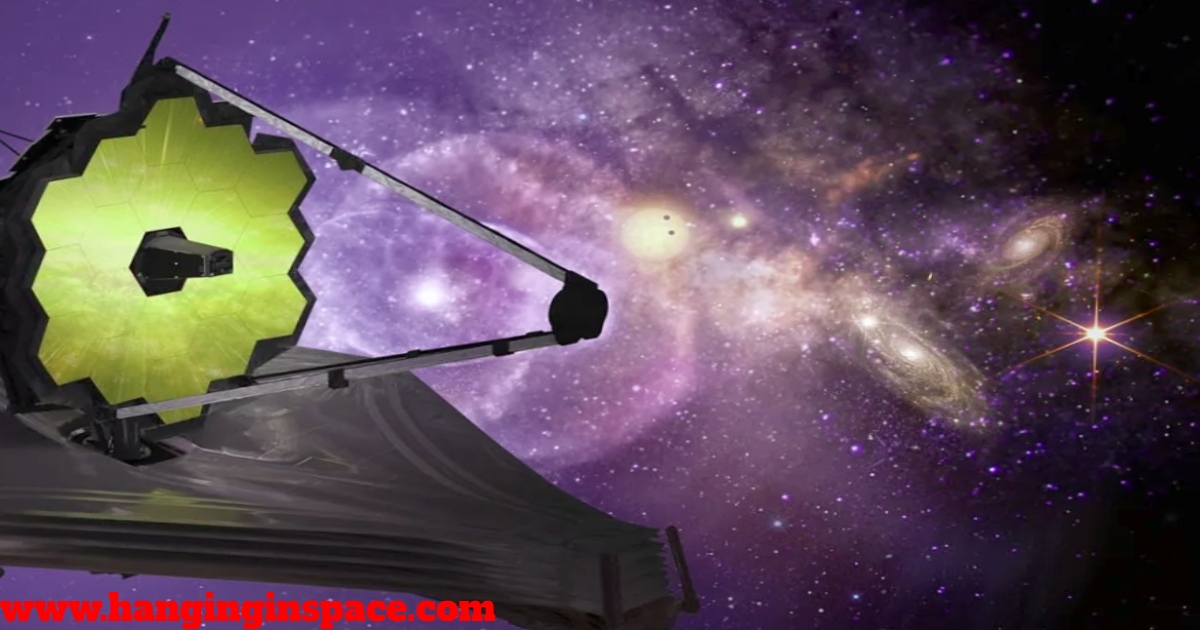We’ll discuss some recent discoveries, new discoveries, or the latest discoveries, findings, & pictures by the James Webb Space Telescope (JWST). James Webb Space Telescope (JWST)’s primary purpose is to answer space mysteries, such as the genesis of the earliest galaxies and the search for habitable exoplanets or the potential second earth exoplanets.
With advanced sensors designed for infrared observations, the JWST aims to fulfill numerous key scientific tasks.

1. James Webb Space Telescope (JWST) Discovered Early Galaxies aka Impossible Galaxies:
The James Webb Space Telescope (JWST) made some remarkable observations on some early galaxies just 500 million to 700 million years after the Big Bang, known as Impossible Galaxies.
These galaxies are known as “impossible galaxies” because their features appear to defy existing cosmological ideas. Some earliest galaxies appeared surprisingly similar to our Milky Way.
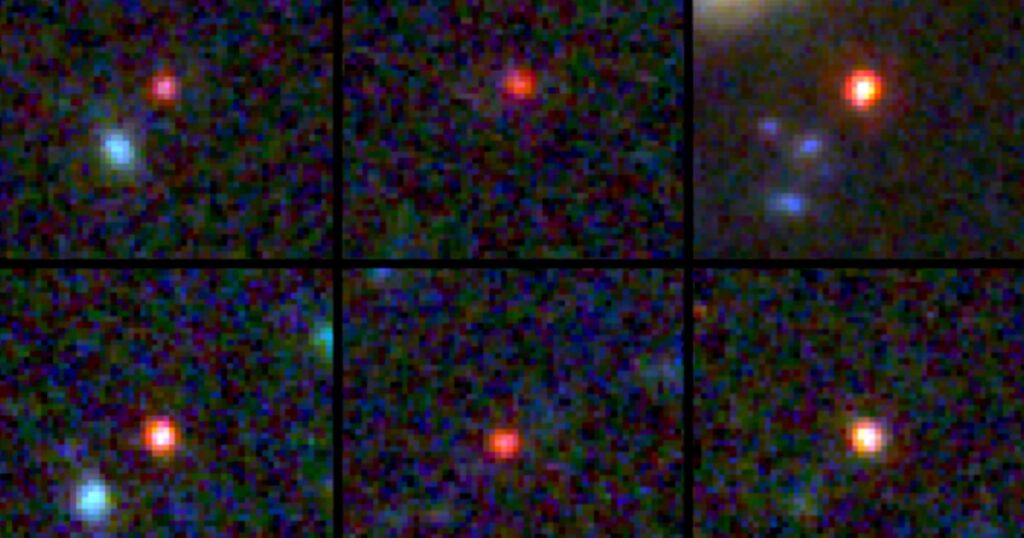
2. James Webb Space Telescope (JWST) Spotted Cepheid Variables:
JWST spotted Cepheid variables, which are typically massive stars 100,000 times brighter than the sun and the most accurate source for measuring cosmic distances, which will help us determine the universe’s expansion rate.
A Cepheid variable is a variable star that pulses radially, fluctuating in diameter and temperature. It varies in brightness, with a well-defined consistent period and amplitude. Cepheids are significant cosmic reference points for measuring galactic and extragalactic distances.
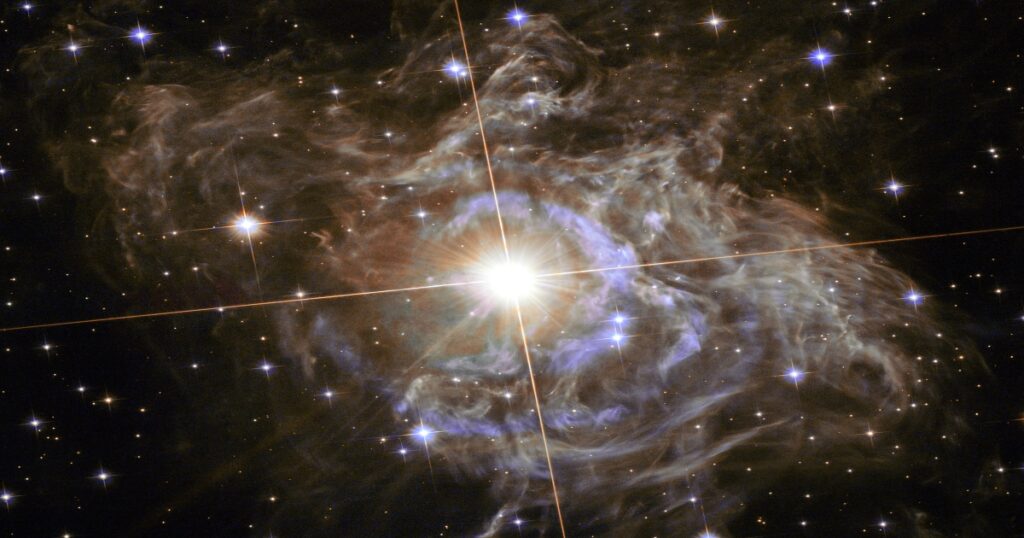
3. James Webb Space Telescope (JWST) Captured Image of Stephan’s Quintet:
Stephan’s Quintet is a visual grouping of five galaxies, but only four are truly physically associated and interacting with each other. It is the first compact galaxy group ever discovered.
Stephan’s Quintet is a fascinating object in the Hercules-Corona Borealis Great Wall studied by astronomers for its complex structure and potential insights into galaxy interactions.
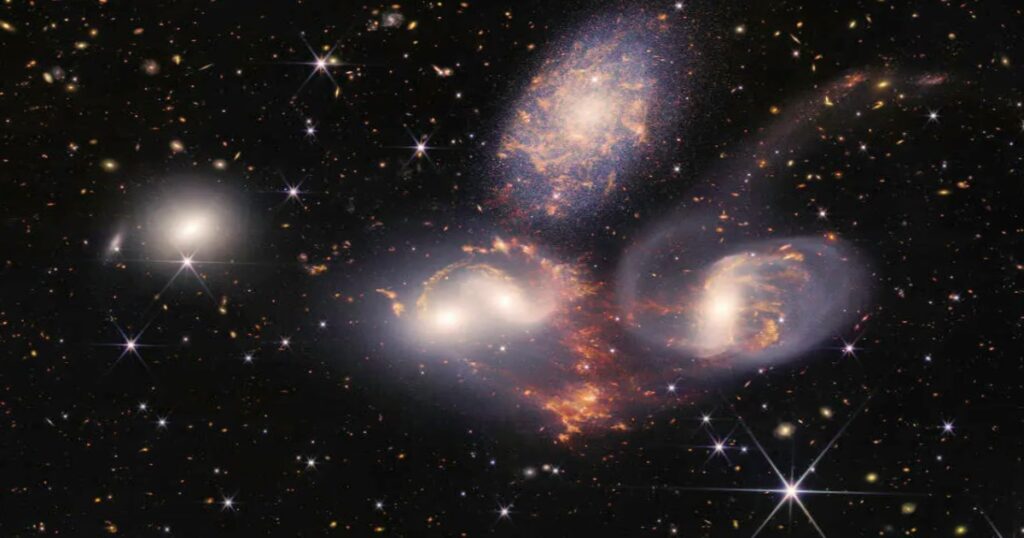
4. James Webb Space Telescope (JWST) Finds Starlight from Two Early Galaxies:
This year, the JWST enabled astronomers to view sunlight from two early galaxies, where scientists believe one of the earliest supermassive black holes formed.
The JWST examined galaxies as they existed when the universe was younger than 1 billion years old, demonstrating how, over time, black holes attain unfathomable masses, often millions or billions of times those of the sun.
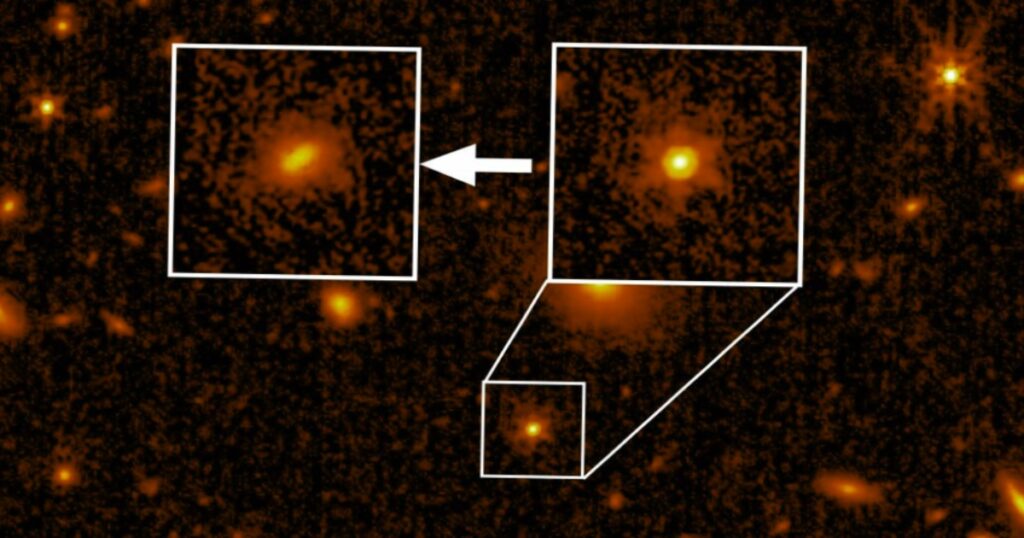
5. James Webb Space Telescope (JWST) Discovered Complex Organic Molecules in a Primordial Galaxy:
JWST discovered fascinating carbon-based compounds, comparable to those present in Earth‘s oil and coal deposits, from more than 12 billion years ago, when the cosmos was only 10% of its current age. In space, these molecules form bonds with tiny dust grains.
Detecting them has been difficult because of the limitations of our telescopes. Webb, on the other hand, makes it appear like finding organic compounds is simple.
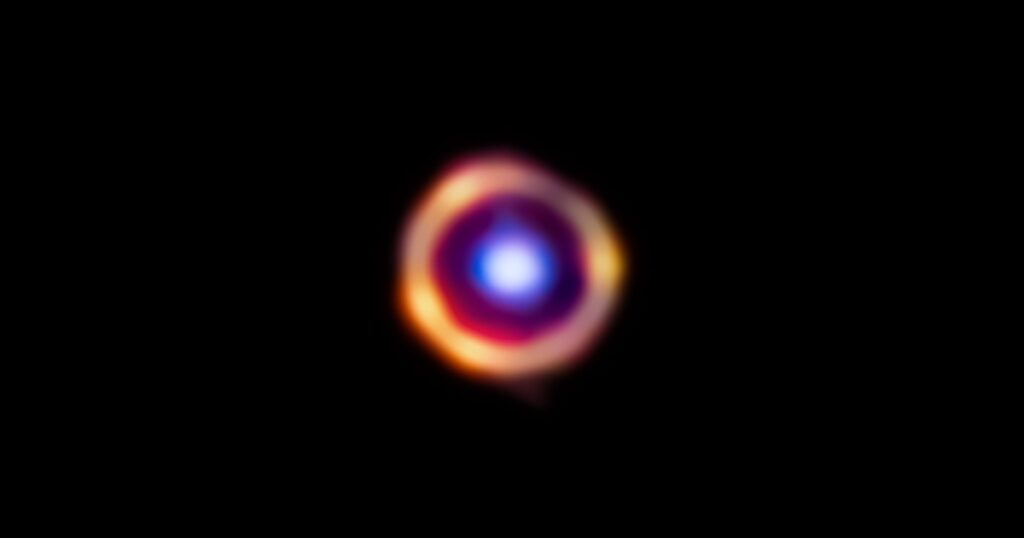
6. James Webb Space Telescope (JWST) Discovered Maisie’s Galaxy:
Astronomers announced in August 2023 that Maisie’s galaxy is one of the earliest galaxies identified. The galaxy appears to have existed when the universe was just 390 million years old, placing it among the four oldest galaxies ever observed.

7. James Webb Space Telescope (JWST) Discovered Most Distant Supermassive Black Holes:
JWST had discovered the most distant active supermassive black hole yet observed, with a host galaxy generated barely 570 million years after the Big Bang. However, this old black hole has an astonishingly low mass – about 9 million times that of the sun.
In contrast, the majority of these cosmic creatures weigh more than a billion solar masses. “It is still difficult to explain how it formed so soon after the universe began,” the researchers added.

8: James Webb Space Telescope (JWST) Rediscovers an Ancient Ghost Galaxy:
The JWST’s discovery of a ghost galaxy hidden deep within a dust cloud sparked scientists’ curiosity, in part because it was discovered barely 900 million years after the Big Bang when the first stars emerged.
Astronomers are particularly interested in the science lessons this galaxy may disclose, “potentially telling us there’s a whole population of galaxies that have been hiding from us,” according to Jed McKinney, an astronomer at the University of Texas at Austin.
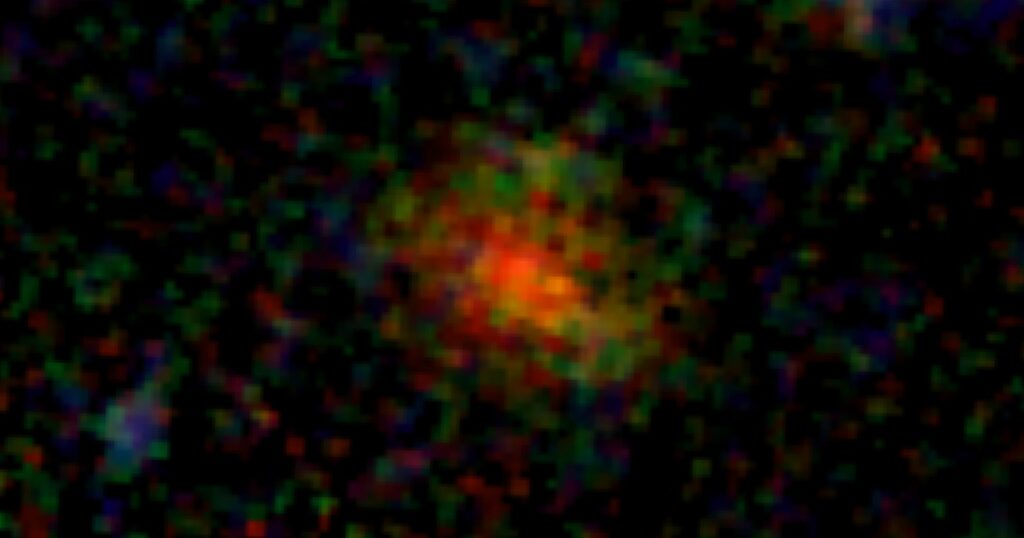
9: James Webb Space Telescope (JWST) Discovered Dark Stars:
Astronomers revealed in July that the JWST had discovered three brilliant objects that might be “dark stars.” Astronomers believe these stars are driven by dark matter, an enigmatic element that accounts for 85% of the mass in our universe but is undetectable to telescopes.
Dark Star is a hypothetical concept based on Newtonian mechanics, It proposes a star so massive that its gravity traps even light, preventing it from escaping. Dark Stars utilize Dark Matter and Dark Energy.
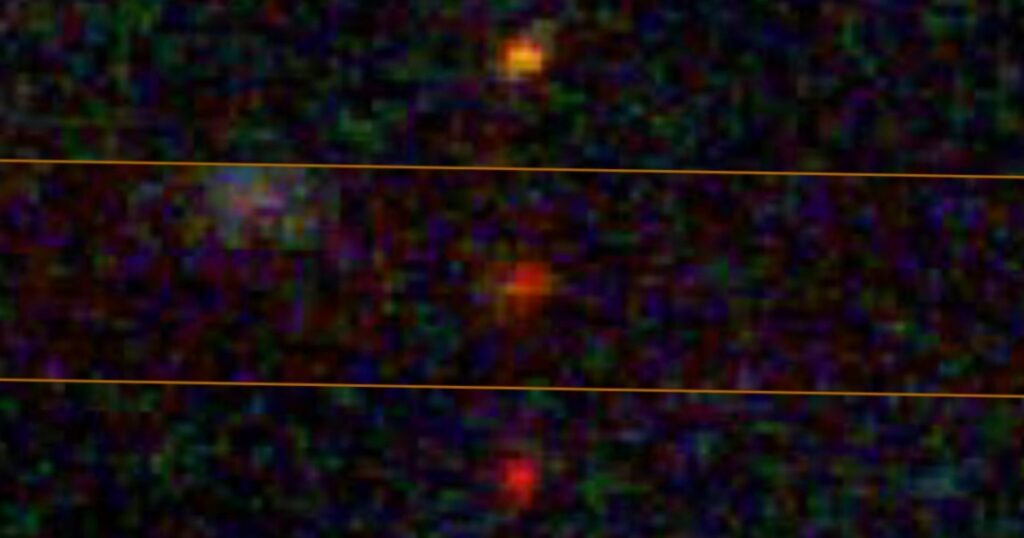
10: James Webb Space Telescope (JWST) Discovered Methane and Carbon Dioxide in the Atmosphere of K2-18 b Exoplanet:
JWST identified methane and carbon dioxide in the atmosphere of K2-18 b, a relatively close exoplanet that orbits a cool star 120 light-years away and is larger than Earth but smaller than the massive planets in our solar system.
Previous Hubble Space Telescope scans suggested that K2-18 b might be a “Hycean world,” an exoplanet with thick, hydrogen-rich atmospheres and seas of liquid water underneath. Recent observations with the JWST confirm this concept since the new data indicate copious methane and carbon dioxide but little ammonia.

Conclusion:
The James Webb Space Telescope (JWST)’s gaze pierced the veil of time, revealing infant galaxies, water-rich exoplanets, and hidden black holes. It’s rewriting the story of our universe, one cosmic marvel at a time.
